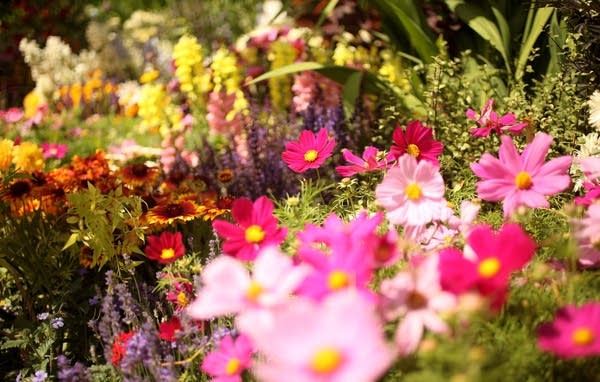9 summertime gardening tips of the trade

Go Deeper.
Create an account or log in to save stories.
Like this?
Thanks for liking this story! We have added it to a list of your favorite stories.
This year's wet weather brought unique challenges for gardeners, from soggy soil to mildew and disease.
Garden expert Julie Weisenhorn joined the show to answer questions, offer suggestions and share some insights on how best to work that field.
9 summer gardening tips
Turn Up Your Support
MPR News helps you turn down the noise and build shared understanding. Turn up your support for this public resource and keep trusted journalism accessible to all.
1. Expect plant stress with a changing climate. Climatologists predict the coming years will see increased heat and humidity combined with fluctuating drought and heavy rain. This will increase plant stress, and may raise the potential for bacterial and fungal disease. Heavy rain can also wash away soil nutrients and splash soil-borne pathogens onto plants.
2. Don't garden on auto-pilot. As the season progresses, actively monitor plant health and soil moisture. Even though there has been a lot of rain, your garden may dry out quicker than you think. Avoid overhead sprinklers to minimize the splashing of soil, and turn off irrigation systems until your lawn has dried out. Getting your soil tested can also give you valuable information on nutrient content and moisture retention.
3. Don't be shy. When you stop by your local farm or garden center, ask questions. Professionals have a great wealth of knowledge and can help you make improvements big and small. The University of Minnesota Extension also has a wealth of resources available on their website
4. Some like it hot. Nightshades -- which include tomatoes, peppers, tomatillos and eggplants -- are warm-loving plants. They should be doing fairly well this season, though perhaps looking beefier than normal due to all the rain we've seen. Nightshades should be rotated each year to break the disease cycle.
5. With some diseases, admit defeat. When it comes to Downy mildew, often observed on basil, the only answer is to throw out the plant and try again in a different location. The spores for downy mildew live in the soil even after the plant is pulled out, so a new plant will soon become infected. And aster yellows, a disease affecting plants in the aster family, has no cure as well. The disease is spread by the feeding of certain insects.
6. It's not too late to plant. If you're still looking to get something in the ground, go for lettuces, or fast-growing varieties of carrots or radishes. You may also be able to find success with ever-bearing strawberries. But avoid slower-growing edibles like cabbage and broccoli -- they simply won't reach maturity before the season ends.
7. Give your coffee a second life. Coffee grounds help break up and add lightness to soil. You can dump them directly into your plot, but mixing them in with other compostables may yield a better result.
8. Don't worry about dieback. Perennials may have experienced significant dieback with this year's harsh winter. This is no cause for alarm, simply prune dead material away.
9. Take charge of your vines. Plants like pumpkins and squash can take up huge amounts of space in the garden. Rather than give in to the takeover, you can train these plants to grow vertically on sturdy trellises. When they begin to bear fruit, slings or nylon stockings can be used to add a little extra support.
Whether you're a master gardener or planting your first seed, what challenges have you seen this year? Leave your questions and comments below.



